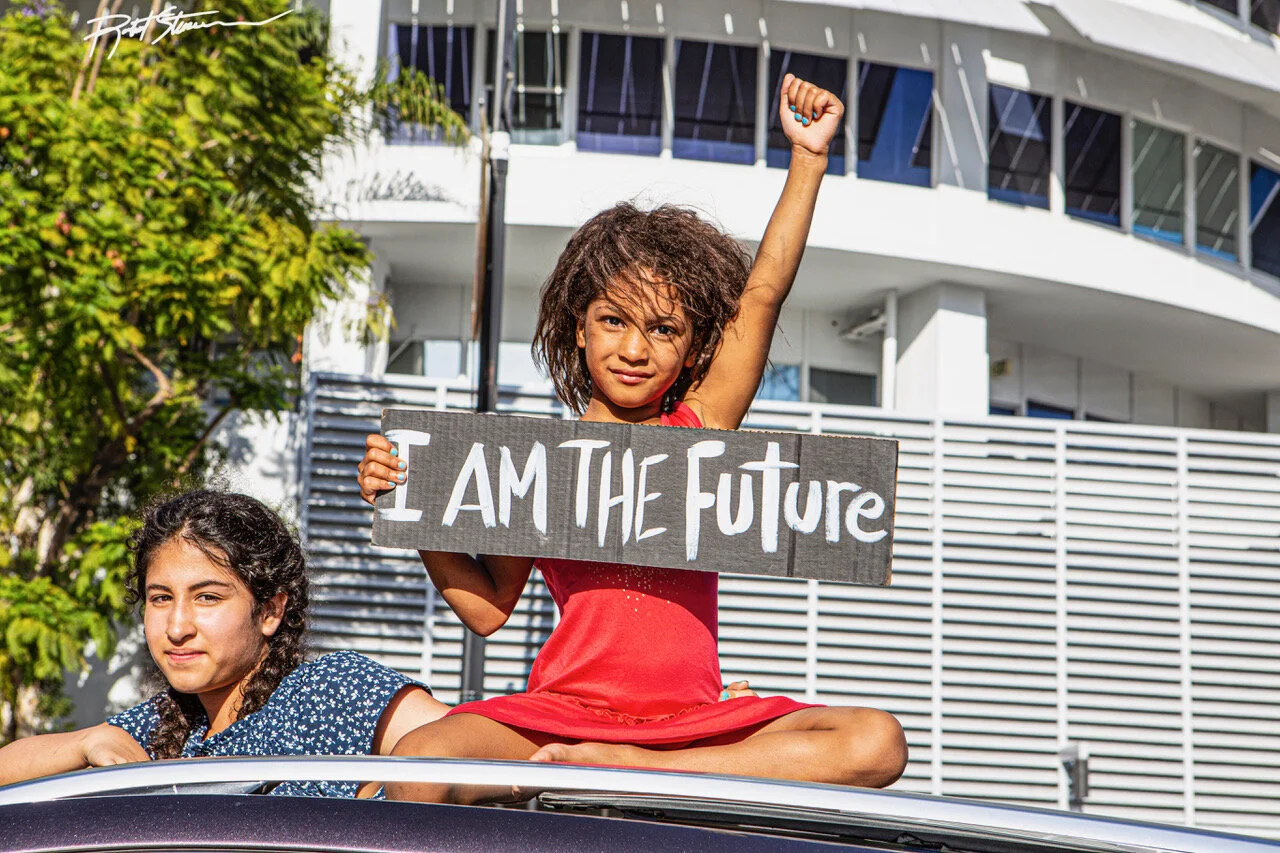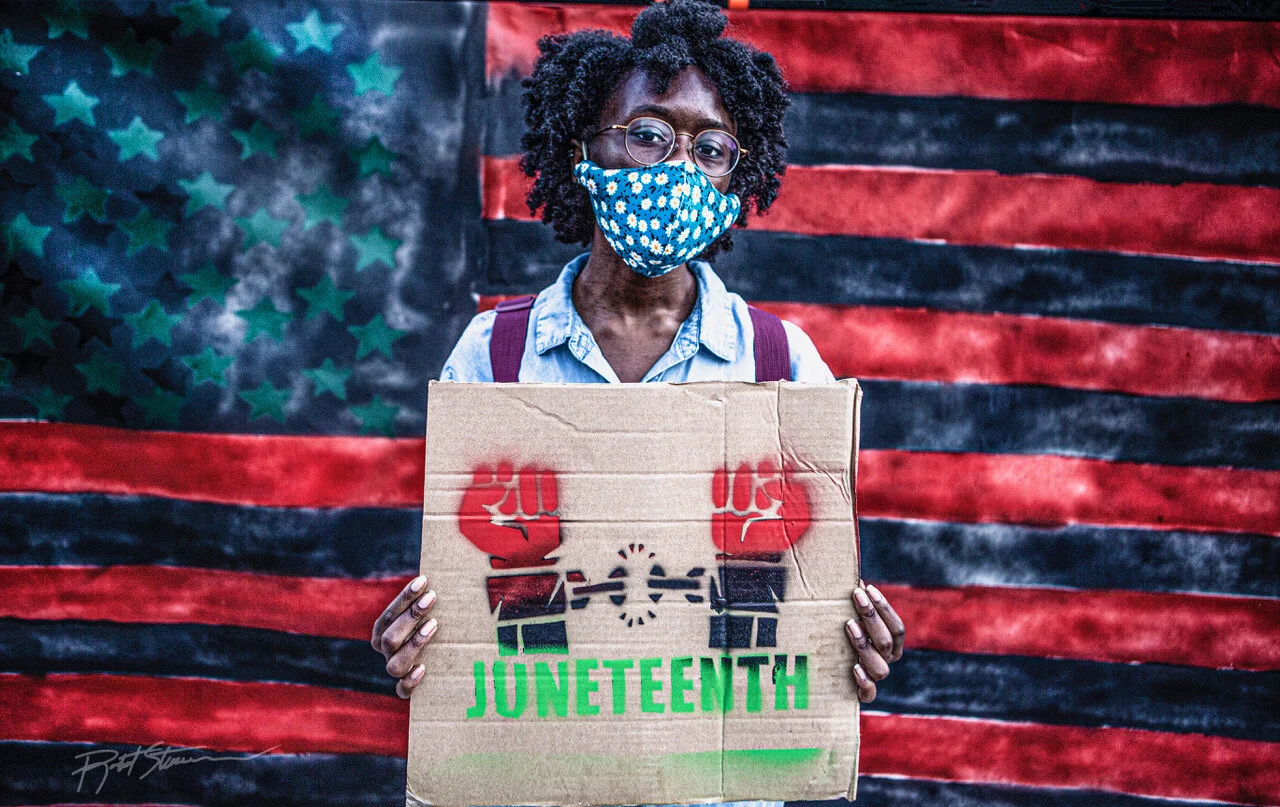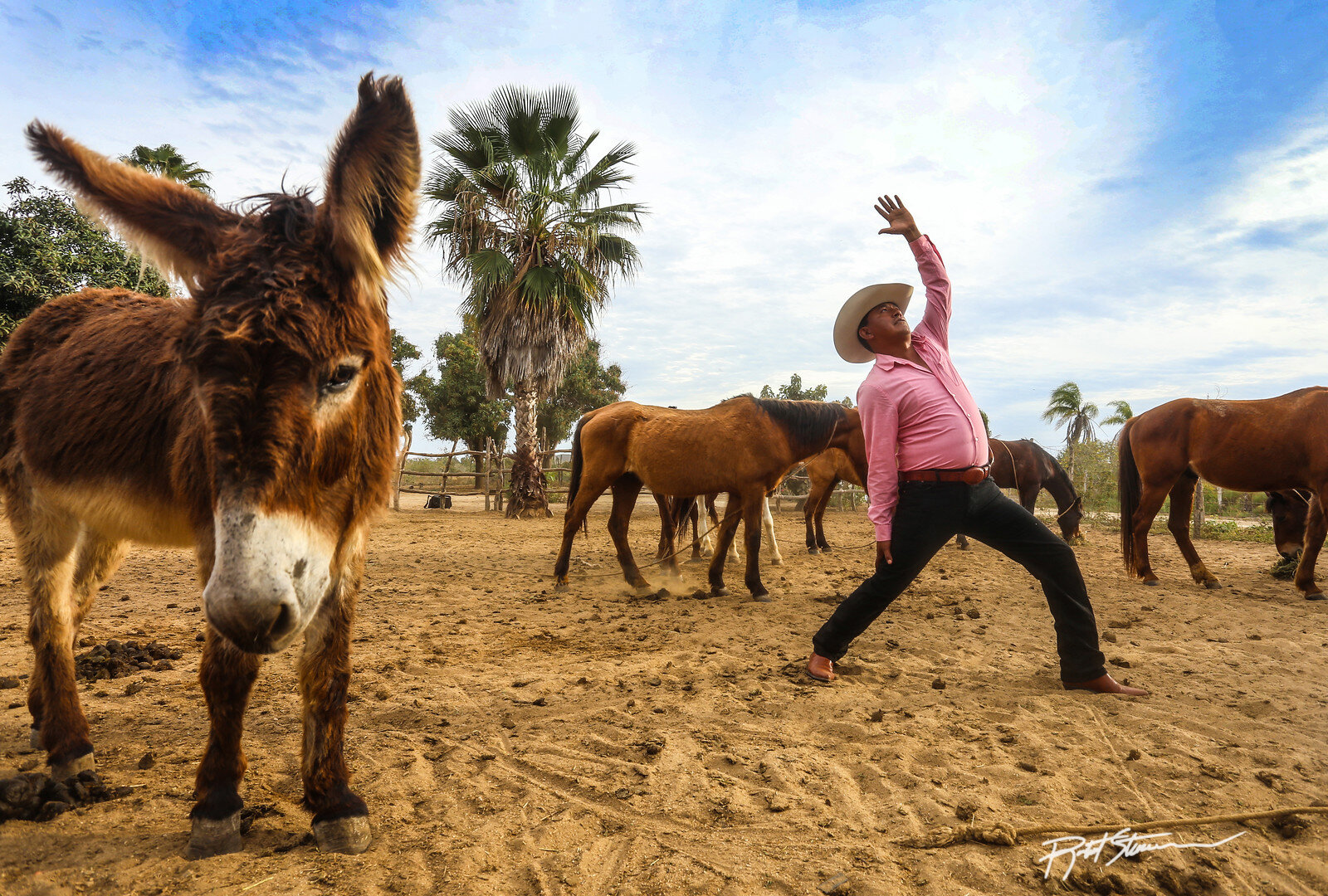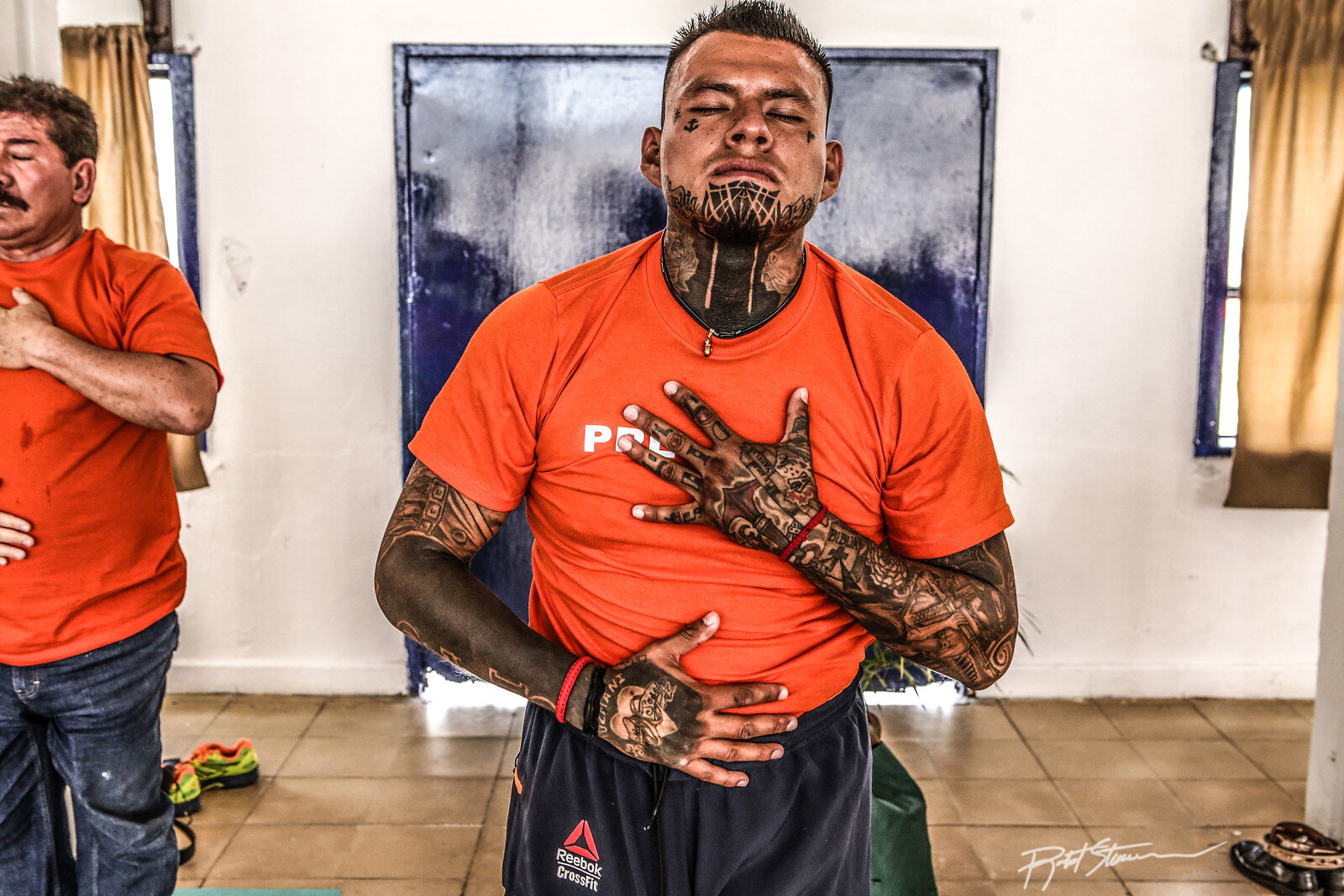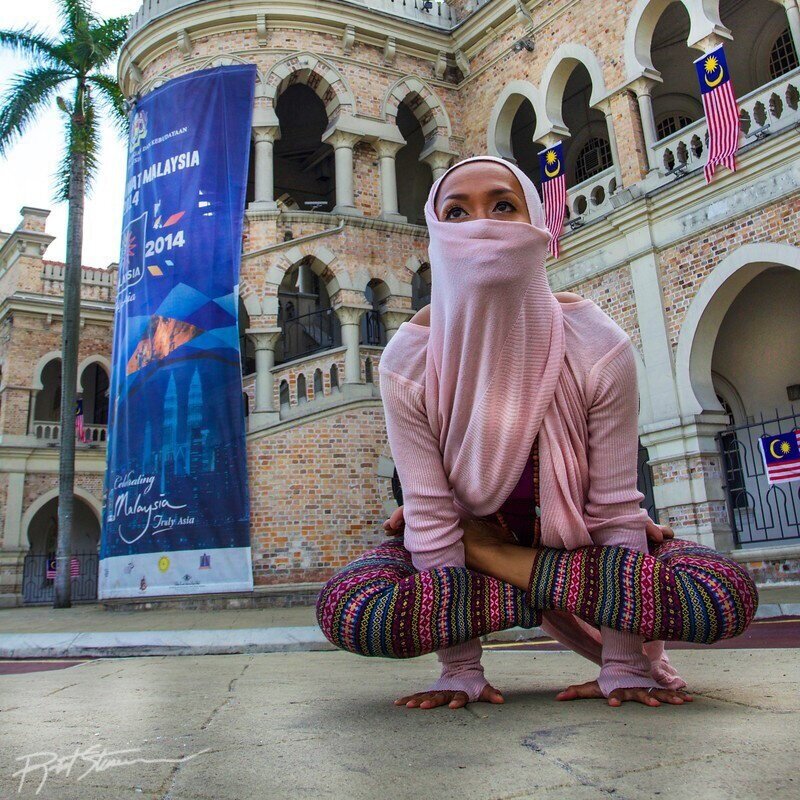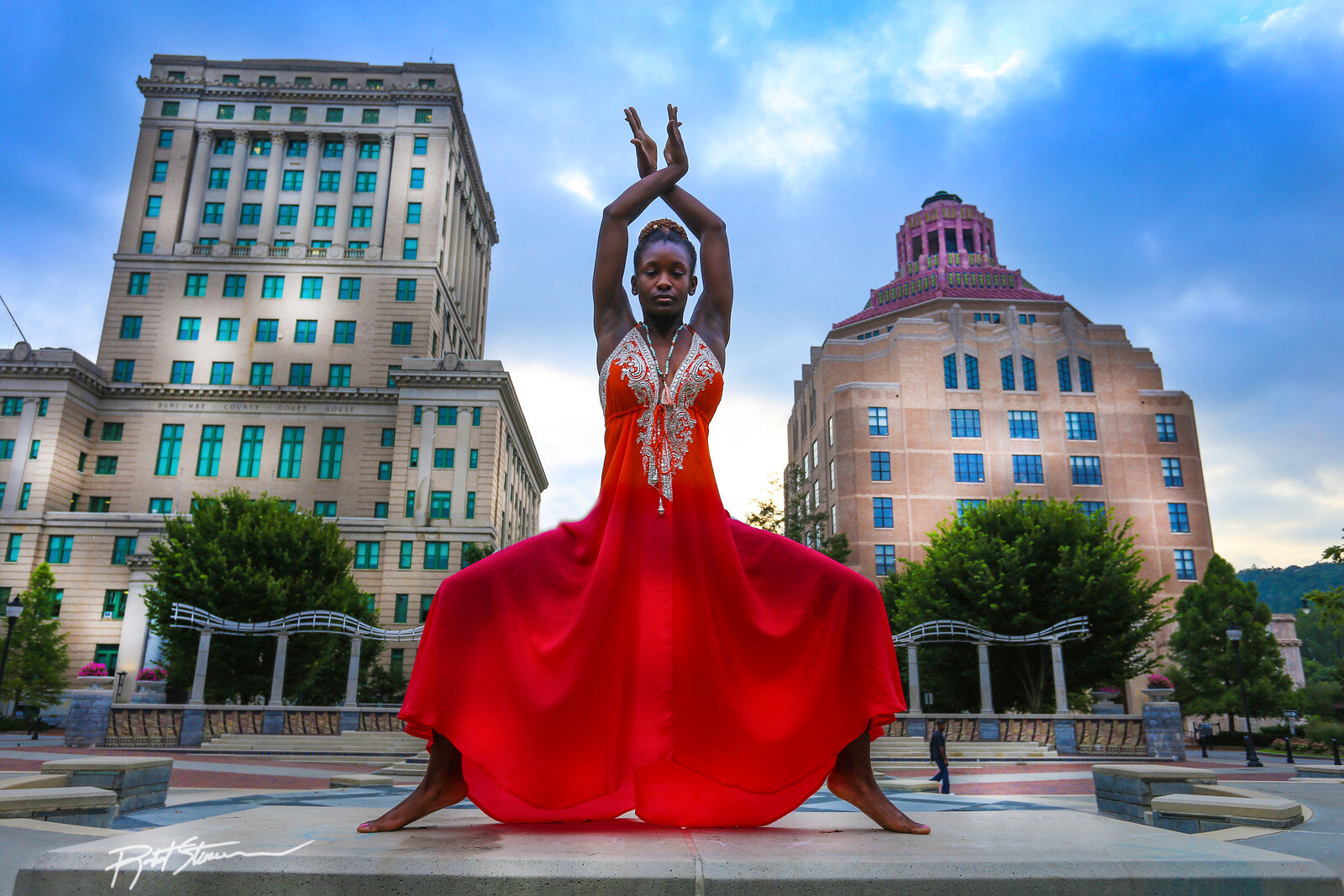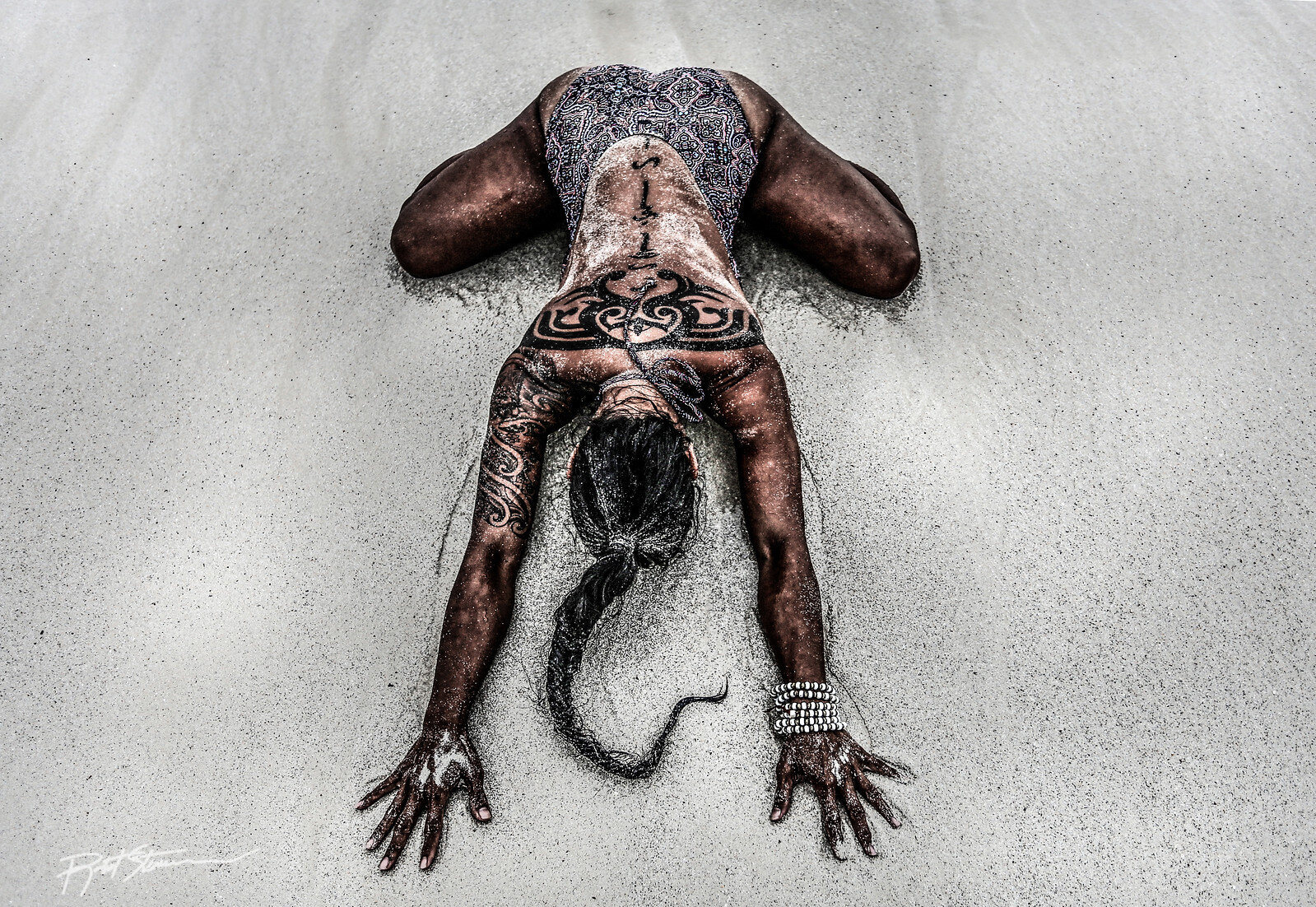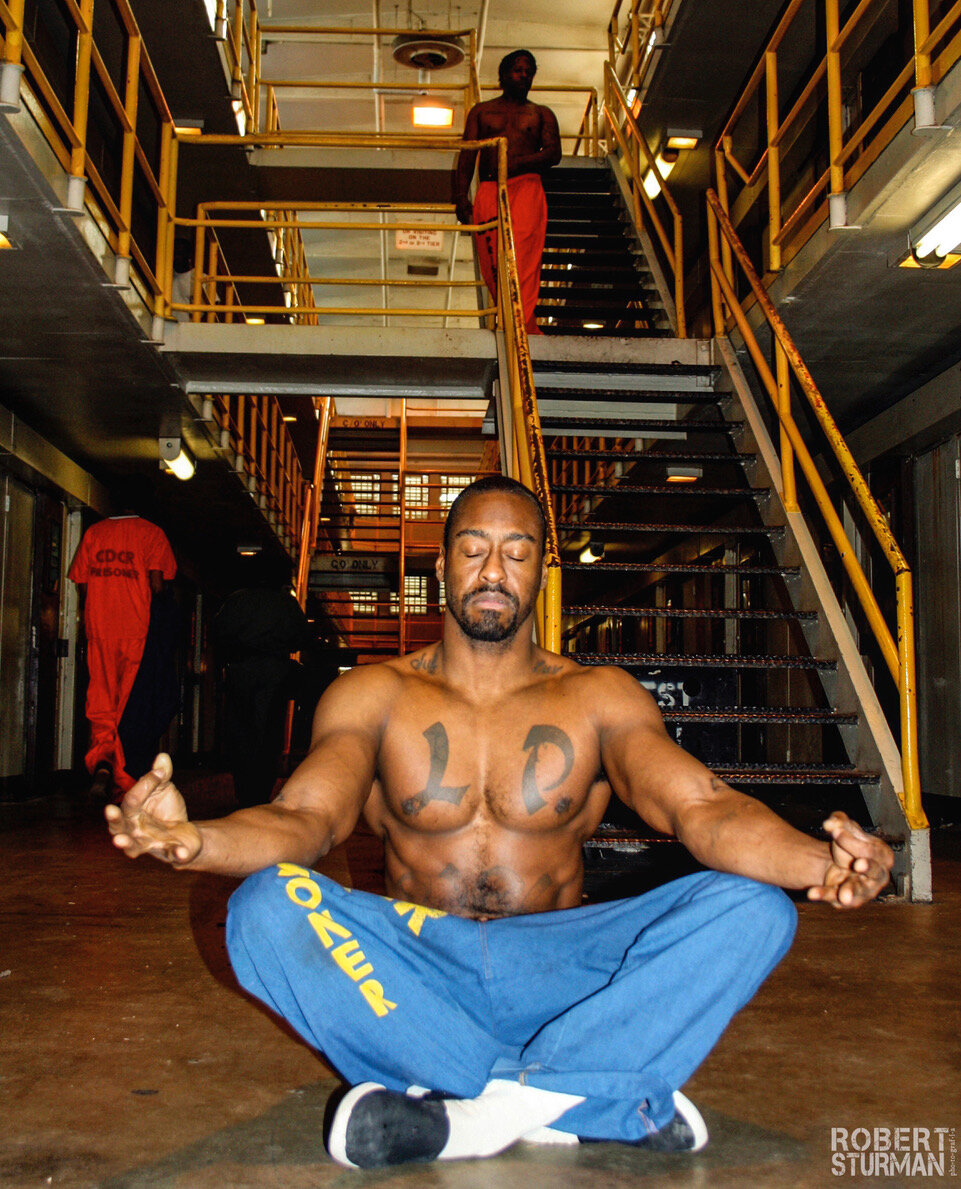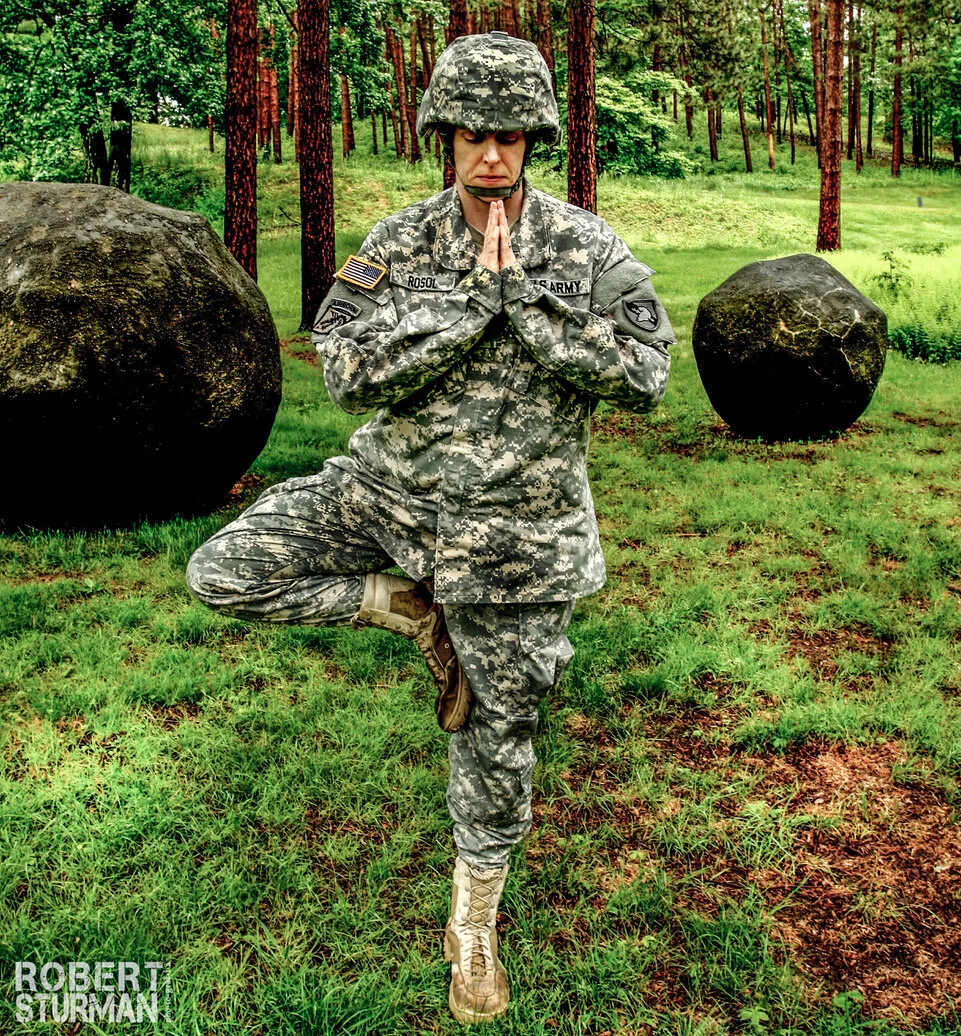Breaking Barriers
This is the photograph that introduced me to the world of Robert Sturman.
Once I stepped through that portal, there was no going back. A flood of emotions poured forth – humility, amazement, a sense of connectedness. Whether it is Robert’s “Scars are Beautiful” series, more timely work as shown below or yoga-themed (keep reading), they have one thing in common – the ability to draw viewers in and force them to look. Captivating. Riveting. Compelling you to look, think, and reflect.
The emotional visual journey that Robert’s photography took me down lined my heart with hope, reminded me that good still existed in our world, and now continues to provide me with inspiration – both as a human and a photographer.
Robert’s last decade of work has largely focused on breaking barriers in the yoga realm – no longer just a white suburban mom pastime – his photography depicts inmates, soldiers, amputees, breast cancer survivors, and even police turning to yoga as a healing force in their lives. His goal is to bring yogis of all colors, backgrounds, and cultures to the forefront - making diversity and inclusivity the norm.
The rawness of his photos often pulls you in, but it’s the blending of beauty and grace from the poses and landscapes that take your breath away. Anything can be beautiful. Everything can be beautiful.
Thankfully, we have Robert Sturman to show us this.
I posed 5 questions for him and his thoughtful responses did not disappoint.
1. I’m going to start off with a hard question. One of the reasons I was so captivated by your photographs was because of their raw humanness. Obviously, many people connect with them and because of that you are making such an impact in our world. Can you remember the first time that you realized one of your photographs was powerful enough to do this & what photo was it?
I am going to answer that with two photographs because they were my first most influential pieces to my knowledge and they were not too far off from each other. The first photograph was from the first time I visited a prison. It is a portrait of an incredibly fit, incarcerated African American man completely at peace, sitting in meditation. The title of the piece is “Cellblock D Sukhasana.” In this particular California prison, I had an unusual amount of freedom to create. After the yoga class that I photographed, the warden asked me if I would like to work with any of the guys individually. We then proceeded to tour the prison and created art. I have never had a situation like that since. While we were working in the cellblock, other inmates were whistling and making fun of the guy I was working with, and it was as if he did not even hear it. It was incredible, actually. Once I shared this particular image, the reaction from the public was pretty unbelievable. It started a conversation about prison yoga that rapidly spread. Most people did not know yoga was going on in the prison system. This image showed it in a way that made it a reality and gave it an emotional texture that makes an imprint in our psyche. That was the beginning of me realizing that images are essential to our evolution.
The second image was from a shoot I did in upstate New York. The yogi asked if she could do the shoot in her military uniform. I didn’t think too much about it — of course it was okay and I thought it sounded interesting. Whoa, that certainly opened up a massive conversation as well. It was as if organizations that offered yoga to the military community had been waiting for the poster image. The requests to use the images started to come in. Articles began showing up, teachers used them for flyers to promote free yoga for active duty and veterans, they would go viral on Veterans Day and Memorial Day. The flame was beginning to catch and a reality began strengthening.
I realized that photographs are ideas that communicate with the audience on an intimate level of emotion. It is a whole dialogue that is occurring between the image and the viewer and if we take great ideas and focus on them, creating strong imagery that evokes feeling, people remember that. It gets stored in our awareness and it begins to become part of the culture. Simply put, I began to see the camera as a powerful, magical box that had the potential to change the world.
2. You have had the privilege of traveling to a multitude of countries, many where you were able to study their art, culture, and people – and this has seemed to have a tremendous effect on your art goals & way of living your life (I’m very jealous by the way). Can you tell me a little bit about how were you able to manage these experiences/trips financially? Were you able to avoid the starving artist lifestyle?
When I graduated from art school, I focused on a unique process of Polaroid photography in which I would use a very intentional carving process to create painterly photographs. The way it worked is I would use an instant Polaroid camera and as soon as the image came out, I would warm it up in the sun and then use different tools — car keys, dental tools, etc…, to carve into the front of the image and create deliberate, conscious strokes with the pigment that was already in the film. I had already created an extensive series in New Orleans and Memphis, where I did graduate work. Then I moved back to California at 24 years and used that work and that process to create a series that I could enlarge, frame and sell at outdoor art festivals. I started at the local Saturday craft market in a beach town called Encinitas, California and just surfed and made art and prepared for the festival. My body of work began to grow, as I created an extensive series celebrating the surf/ocean culture I was deeply immersed in. So my portfolio grew, my booth grew, my desire to branch out grew. I began to apply to festivals all over the state of California , Arizona, Utah, Washington. There was always an off season and during that time I would choose a place to go and travel and create a body of work — from Hawaii to Mexico, throughout the United States, Europe, Thailand, Laos, Burma, India, Nepal. I just went and would bring back the work and share it at the festivals. I was never asked to do anything. I just did what I did and then sold it. It was a very different life than what has become my professional life now. In the past 10 years or so, print sales have greatly declined and I began doing shoots to make a living — only yogis though. That has been my specialty and very rarely am I given any direction, as people know my style and that is what they would like to be a part of.
3. You’ve had a lot of formal education/training in the arts, as well as apprenticeships/master artist guidance. For those photographers that aren’t able to go to school for it, but are still trying to be successful – what technical skill do you suggest as being the most important one you can learn to hone your craft?
I cannot think of or remember anything I learned from a teacher that was really technical or even about my craft. That all came from doing. What I learned from the individuals who were teachers along the way, was how they went about living their lives — from their health to attitude, to relationship with money, family, the world, etc… Those successes and failures made an imprint on my education. All that technical stuff, we can Google / Youtube. Everything we want to know is being taught by some kid in their basement building an awesome YouTube channel. It is a luxury. So, I am going to answer this question in a way that I truly believe is the most important technical skill for success. I believe it is our heart — Taking care of it, using it to feel deeply, to care, to connect with the world, to cultivate the light we need to SEE. They can’t teach that in the academy’s nor on the internet. This is what will sustain your through a lifetime of participating in this complex world. It is not a race, but if it was, most people would not have the endurance to finish. We want to be able to simply finish the race — no need to win. Slow, steady, consistent — moving forward and enjoying each step of the journey. Finishing is winning.
4. I recently donated to the Kickstarter campaign for Sun Salutations Greeting Cards – I was mostly pulled in with images of your photos on the cards, and I love the cause. You have done a lot of work in the humanitarian arena, and I would love to know which one has been closest to your heart. Feel free to share as much as you are comfortable with.
First of all Tyler, thank you for supporting Sun Salutations. They are a brand new company and Melanie, the woman who started it, is a breast cancer survivor and thriver and she is courageously creating a company that is built on equality, awareness, inclusivity, and diversity! That is an act of revolution in any day and age. Now to embrace your question. A tough question because my heart feels close to any human being who is in pursuit of doing better, being their best. That sincerity of heart is what is closest to my heart. My heart has broken in prison when I have said good bye to individuals who I worked with and they asked where their family could see the pictures because they wanted them to see that they were doing something good in there. I felt their pain, sorrow, tears, shame, regret and willingness to heal. I have seen it in the soldier’s eyes who is just so damn grateful to have found this thing called yoga and meditation that has helped them to come back, to have another chance in this world — a world in which they saw the horrors of war — things human beings should not have to see. It is the individual, the human being trying to do his/her best that has been the closest to my heart.
5. You are definitely a photographer that has been successful with several themes (from the Polaroids, to breast cancer survivors, to all the yoga-infused portraits). Can you tell me is your yoga-portraits journey continuing? Or are you headed in a new direction/theme entirely that you could provide us with a little sneak peak into?
Tyler, this is why it has taken me so long to finish this interview. You have asked a question that has been heavily on my mind these past few months. I was already beginning to slow down and step back before the pandemic hit, and the pandemic just made it easy to take a pause. Right now, I feel like it is time to take my life’s work and put it into a retrospective book and prepare to exhibit it when the time does come. The predominant theme of my work has been about healing, self-care, helping others, the power of yoga and meditation to bridge continental and cultural divides with a strong emphasis on awareness, inclusivity, diversity, and equality. I wanted to step back and have a good look and let my thoughts catch up to the images/themes I have been about. I have very much enjoyed going nowhere and diving deep into routine, solitude, and simply being. I have no idea what the future holds. And I decided to surrender and use the opportunity to relax, reset and begin anew.
To see more of Robert Sturman’s photography check out his website or follow him on social media below.
Daily Inspiration:


